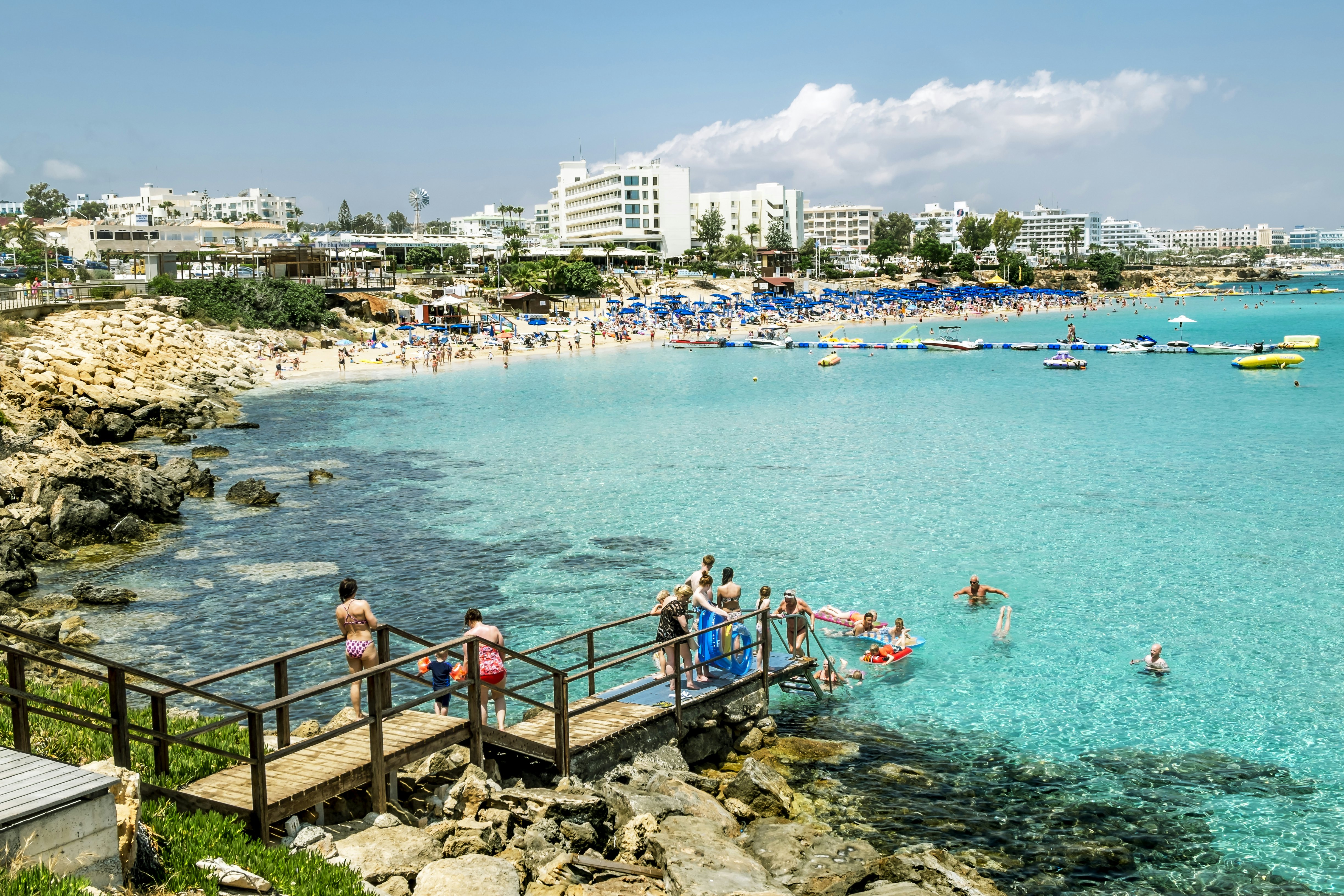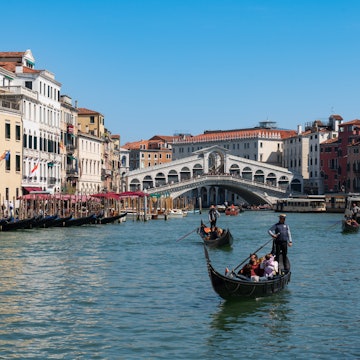
Getting around Cyprus: how to navigate this sun-drenched island

Nov 11, 2021 • 6 min read

Rent a scooter and follow the back roads to find overlooked sights like the Kamares Aqueduct © wundervisuals / Getty Images
Getting around Cyprus is easy and affordable. Whether you rent your own wheels, use the comprehensive bus system or take a taxi, getting to where you want to go will rarely be a challenge.
Distances are small and roads are well maintained along the coast and between major towns. Even traveling between the southern Republic of Cyprus and North Cyprus is easier than it used to be; just be sure to check the current visa requirements first.
Note that there are important differences if you are traveling to the north rather than the south. The Republic has direct international flights into Pafos and Larnaka, with all the usual international airport facilities; North Cyprus is only recognized by the government of Turkey, and all flights and ferries run via Turkey. Flights to North Cyprus use poorly appointed Ercan Airport near the Turkish Cypriot capital, North Nicosia (Lefkoşa).
Here's everything you need to know about getting around on the island of Cyprus.
Bus
Traveling by bus in Cyprus is inexpensive and convenient, although there are big differences in bus services between the Republic and North Cyprus. Also note that there are no direct bus services across the Green Line; generally, you'll need to take one bus to Nicosia (Lefkosia) or North Nicosia (Lefkoşa), then cross the border on foot and catch another bus on the other side.
The bus network is comprehensive. In the south, regular InterCity Buses link the main towns and many rural villages, and there are useful urban networks in the capital and in Larnaka, Lemesos and Pafos. Buses run from Monday to Saturday, with reduced schedules on Sunday. Almost all bus services stop by 6pm. Note that services to small villages may run only once or twice a day or on specific days.
Fares are cheap and tickets can be bought on the bus; use cash. Within the five bus regions in the south, travel costs €1.50 ($1.70) per ride, €5 ($5.80) per day, €15 ($17.30) per week and €40 ($46) for a month of unlimited journeys. InterCity Bus fares between regions are also reasonable – a trip from Larnaka to Nicosia costs €4 ($4.60). A ticket good for unlimited travel for one day costs €15 ($17.30).
The website Cyprus By Bus has good route and schedule information for the south. There are also handy shuttles linking Larnaka International Airport and Pafos International Airport to major towns; see the shared airport website for details.
A web of private companies provide bus services in North Cyprus. There is no one place to check schedules and routes, but services between major cities tend to run every 20 to 30 minutes during daylight hours. Fares are cheap, between 4TL and 8TL.

Car
The easiest way to get around Cyprus is with your own wheels. All the major international rental companies have offices at the two airports in the south and in towns popular with tourists. In addition, there are numerous local agencies on both sides of the island. In summer, reserve a car in advance to lock in lower rates and guarantee availability; at busy times, all the vehicles may be snapped up.
You need a license valid in your home country to rent anything with an engine larger than 50cc, and you must be aged 21 or over in the south, and 18 or over in North Cyprus. While it is theoretically possible to take a rental car from the south to the north, rental agencies discourage this. Ask about any extra insurance needed to do this when you pick up the vehicle. It is not possible to take a vehicle rented in the north to the south.
Road conditions across Cyprus are good, but driving skills are variable and the island has a high accident rate. Both sides of the island drive on the left. Cyprus Driving is a good and comprehensive resource for local license and road rules details. Note that options for buying fuel are limited in rural areas – fill up before driving into the hills. Open-top 4WDs are a popular way to reach more remote monuments and beaches, and scooters and motorcycles are available for rent in most tourist areas.
Bike
While there is little special provision made for bikes in Cyprus, you can have an adventurous visit on two wheels. Places to rent a bike can be found in many tourist areas, and costs average about €15 ($17) per day in the south and 150TL ($15) per day in North Cyprus. Inspect bikes carefully and make sure the rental includes a helmet.
Cyprus Tourism has good information for cyclists in the south, including routes and listings of rental companies. Larger towns in the south have bike lanes and there are often oceanside promenades that include bike lanes. Bike lanes are rare in the countryside and in the north, and roads are often busy; ride carefully. If you are heading for the hills of the Troödos Mountains or Kyrenia (Girne) Range, make certain that you and your bike are up to the challenge.

Taxi
Taxis are plentiful across Cyprus, with reasonable fares, and they're a popular means of transport for locals and visitors alike. Regular taxis in the south use meters and they can be found at taxi stands in most towns and tourist areas. They can also be summoned by phone — there are dozens of companies, so ask a local about the best number to call.
Taxi services in North Cyprus are more ad hoc, with fares negotiated before the trip begins, but costs are low: a taxi from North Nicosia to Kyrenia costs about 100TL ($1). On both sides of the island, you'll find service taxis – long-distance shared taxis that carry up to eight people and run on fixed routes from city to city, charging by the seat. In the south, these are organized by the Travel & Express consortium; in North Cyprus, they're run by assorted local operators and are known as dolmuş
Accessible transportation in Cyprus
Accessible travel in Cyprus is a mixed bag. The ancient streets can be tricky for mobility-impaired travelers to navigate, but things are definitely easier in the south. More modern hotels and resorts have accessible rooms and EU rules mean that there are some parking spaces reserved for drivers with disabilities in towns and at some beaches (some of which have wheelchair ramps leading into the water). Cyprus Tourism provides some useful resources for accessible travel in the south.
With notice, taxi companies can often provide accessible vehicles; ask when booking. Public buses are usually not accessible on either side of the island. International vehicle rental firms may have accessible vehicles if you book well in advance. North Cyprus is less well organized for accessible travel, but local people go out of their way to be helpful. For more information on accessible travel, see Lonely Planet's Accessible Travel Resources.
You may also like:
The best places to visit in Cyprus: from Aphrodite's rock to Adonis' bath
See a different side to Cyprus on these stunning hikes
The 8 most beautiful beaches in Cyprus for wildlife, swimming and partying













